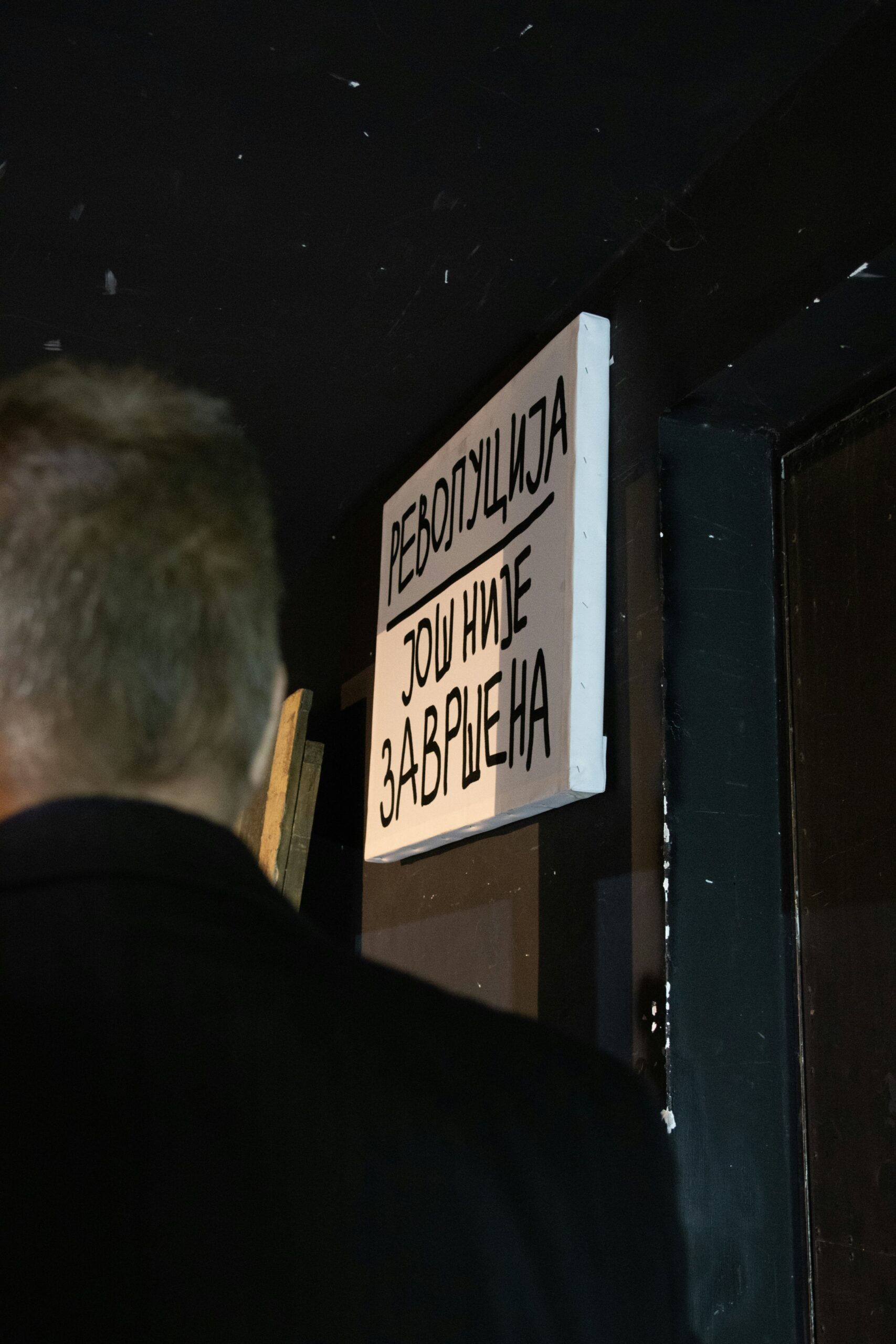Introduction to the Mahsa Amini Protests
The Mahsa Amini protests in Iran in 2022 marked a significant episode in the nation’s contemporary history, epitomizing the deep-seated societal and political tensions. These protests were ignited by the tragic death of Mahsa Amini, a young woman who died under suspicious circumstances while in police custody. Amini was detained by the Guidance Patrol, Iran’s morality police, for allegedly violating the country’s strict dress code for women. Her demise incited a wave of public outrage, casting a harsh spotlight on Iran’s law enforcement practices and human rights record.
The scale and intensity of the protests that ensued were unprecedented. What began as localized demonstrations quickly escalated into widespread national unrest. People from various walks of life, including students, workers, and activists, unified in their dissent, demanding justice for Mahsa Amini and calling for substantial reforms. The protests were characterized by their vigor and the diverse demographic of participants, reflecting a broad spectrum of societal discontent.
These demonstrations not only highlighted issues of gender discrimination but also encompassed broader grievances related to political freedoms and economic challenges. The international community closely monitored the situation, with numerous human rights organizations and global leaders condemning the Iranian authorities’ response. The widespread coverage underscored the gravity of the protests and the growing call for change within Iranian society.
In addressing the root causes of such profound civil unrest, it’s crucial to acknowledge the multifaceted nature of the protests. The Mahsa Amini case became more than a symbol of resistance against oppressive policies; it served as a catalyst for a broader movement advocating for personal liberties and justice within the Iranian legal framework. This period was marked by intense confrontations between protesters and security forces, further intensifying public sentiment and international scrutiny.
Incident Leading to Execution
The execution of an individual accused of killing a high-ranking colonel during the 2022 Mahsa Amini protests has drawn considerable attention, both domestically and internationally. On the specific day in question, tensions were running high as demonstrators took to the streets in reaction to the death of Mahsa Amini while in police custody. Amidst the chaos, reports emerged that a colonel was fatally injured during a confrontation.
The colonel, who was identified as an influential figure within the security forces, reportedly attempted to disperse the protesters when he was attacked. Eyewitness accounts indicate that a small group managed to break through police lines, directly engaging with the military officers present. It was during this moment of heightened unrest that the colonel was reportedly struck, leading to his untimely death.
In the immediate aftermath, the tragic incident rapidly became a focal point for both public outrage and sorrow. The authorities swiftly condemned the attack, labeling it an act of violence against state officials. Simultaneously, amidst an outpouring of grief, there were open calls from several factions within the protest for accountability and transparency regarding the killing.
Efforts to identify and apprehend the suspect were rigorous and sustained. Surveillance footage, eyewitness testimonies, and various forms of intelligence gathering were deployed. The government stated that these measures were imperative to restoring order and ensuring justice. After an intensive investigation, officials announced they had identified and detained the individual responsible for the colonel’s death.
The announcement was met with a mixture of approval and skepticism. While some felt justice was being served, others raised concerns about the fairness of the legal process, given the contentious atmosphere surrounding the protests and the death of Mahsa Amini. Nonetheless, the authorities maintained that due process was followed in bringing the alleged perpetrator to justice.
The Legal Proceedings
Following the arrest of the suspect in the killing of Colonel during the 2022 Mahsa Amini protests, Iranian authorities initiated a series of legal proceedings characterized by significant scrutiny and media attention. The individual, whose identity remains undisclosed per local regulations, was charged with murder and disruption of public order amongst other associated offenses. These charges, considered under Iranian law as grave, set the legal framework for an extensive judicial examination.
The timeline of court hearings showcased a structured yet expedited process. The initial hearing took place promptly after the arrest, wherein the prosecution presented their case, emphasizing the severity of the crime in the context of national security. Subsequent hearings involved witness testimonies, forensic evidence, and detailed police reports that purported to establish the defendant’s involvement beyond any reasonable doubt.
The prosecution’s legal arguments centered on the narrative of premeditated aggression and intent to destabilize societal order. They underscored the symbolic significance of the victim, a high-ranking military official, and argued that the act was a calculated strike aimed at undermining state authority amidst widespread civil unrest. Contrarily, the defense argued deficiencies in evidence, questioned the reliability of witness accounts, and underscored the tumultuous conditions under which the incidents unfolded, suggesting misidentification and procedural lapses.
Notable aspects of the trial included the overwhelming public interest and media coverage, both domestically and internationally. Reports frequently highlighted the polarized viewpoints: governmental insistence on stringent punitive measures versus civil rights activists advocating for due process and fair trial standards. Media outlets covered the ongoing proceedings extensively, reflecting the broader societal divisions and international concern regarding Iran’s judicial practices, especially in cases interlinked with political dissent and public protests.
Execution and Public Reaction
In a development that has drawn worldwide attention, Iranian authorities executed an individual accused of the killing of a security official during the 2022 Mahsa Amini protests. The execution took place on [specific date] via public hanging, a method notably used within the country’s judicial system. The location of the execution was Evin Prison in Tehran, a site often associated with high-profile cases. The identity of the executed individual, [Name], was confirmed by state media, who reported that due legal processes were followed.
The execution has garnered a significant reaction from both domestic and international communities. Human rights organizations were quick to denounce the act, asserting that it underscores Iran’s ongoing use of capital punishment for those involved in protests and dissent. Amnesty International and Human Rights Watch issued statements condemning the execution, highlighting concerns over the fairness of trials and the potential for human rights abuses.
International governments have also voiced their concerns. Several Western countries, including the United States and members of the European Union, called for an immediate end to Iran’s use of the death penalty in such cases. Diplomatic representatives from these nations have frequently criticized Iran’s judicial system for its handling of protest-related cases and the broader implications for human rights in the region.
Within Iran, reactions have been deeply polarized. Supporters of the regime applauded the execution as a necessary action to maintain law and order, viewing it as a deterrent against future unrest. State-controlled media outlets framed the execution as justice served for a grievous crime against a security official, emphasizing the need to protect national stability.
Conversely, opposition groups and local communities aligned with the protest movement expressed dismay and anger. Vigils and smaller-scale protests emerged in the days following the execution, with participants calling for justice reform and the protection of civil liberties. Social media platforms played a significant role in amplifying these dissenting voices, showcasing widespread condemnation and calls for international intervention.
Impact on Human Rights in Iran
The recent execution over the killing of Colonel during the 2022 Mahsa Amini protests has reignited discussions about the state of human rights in Iran. This particular incident is not isolated but rather a continuation in the broader context of Iran’s frequent use of capital punishment. Iran’s legal framework allows for the death penalty for a range of offenses, including drug trafficking, murder, and acts deemed as corruption on earth. The country remains one of the top executioners globally, only second to China in recent years.
Human rights organizations and experts have continuously raised concerns over the application of the death penalty in Iran. They argue that the judicial processes often lack transparency, and defendants frequently do not receive fair trials. Amnesty International, in its annual report, often highlights cases where individuals were executed following confessions extracted under torture or after trials marred by due process violations. This pattern is seen as a method of silencing dissent and instilling fear among the populace.
The execution related to the Mahsa Amini protests fits into this larger pattern of using capital punishment as a tool for political repression. The protests themselves were a response to the death of Mahsa Amini, a young woman who died while in police custody, leading to widespread unrest and calls for greater accountability and reforms. By executing those implicated in the protests, the government appears to send a stark warning against challenging its authority. Such measures are often criticized as exacerbating human rights abuses rather than addressing the underlying issues.
Human rights experts contend that these actions contravene international human rights norms, including the right to life and the right to a fair trial. United Nations human rights bodies have repeatedly urged Iran to impose a moratorium on the death penalty and to ensure that any use of capital punishment is in line with international legal standards. However, the persistent application of such draconian measures indicates a broader, systemic issue in how human rights are regarded and protected within the country.
Government’s Stance and Messaging
The Iranian government has made it clear that the execution of the individual accused of the colonel’s death during the 2022 Mahsa Amini protests is being framed as a necessary step to maintain law and order. Official statements from government representatives and state media have consistently highlighted the importance of upholding national security and the rule of law. They assert that such actions are pivotal to ensure societal stability and send a deterrent message to those who might contemplate engaging in violent activities.
State officials have emphasized that the executed individual was given a fair trial and that the legal proceedings adhered to both national and international norms. According to statements from high-ranking officials, the execution serves as a clear indication of the government’s readiness to take decisive action against those who participate in violent unrest. The messaging frequently underscores the colonel’s death as a serious offense against the state’s security apparatus and an affront to the country’s law enforcement institutions.
State media outlets have played a significant role in propagating this narrative. Through consistent coverage, they have painted a picture of the individual as not just a criminal, but as someone intent on destabilizing the nation. By framing the execution within the context of upholding justice and protecting citizens, the government aims to legitimize its actions and consolidate public support. The media has also highlighted endorsements from various pro-government factions, affirming that such measures are imperative to deter future incidents of violence.
Furthermore, statements from the judiciary have reiterated the importance of strict punishments in cases involving attacks on security personnel as a deterrent to potential lawbreakers. They argue that ensuring the safety and security of the nation necessitates uncompromising legal responses to severe violations. This approach suggests that the execution is part of a broader strategy to project strength and uphold order amidst ongoing social unrest.
International Reactions and Diplomatic Repercussions
The execution of an individual accused of murdering a colonel during the 2022 Mahsa Amini protests has drawn significant attention and reactions from the international community. Various foreign governments, international bodies, and non-governmental organizations have issued statements condemning the execution, highlighting concerns over human rights violations and the judicial process in Iran.
Notably, the European Union issued a strong statement expressing its dismay over the execution, calling it a stark violation of human rights and urging Iran to halt further executions. Individual EU member states have echoed similar sentiments, with several countries calling for a reassessment of diplomatic relations with Iran. The United States State Department also condemned the execution, labeling it as a blatant disregard for the rule of law and human rights. In addition to these Western powers, Canada has called for global unity in opposing Iran’s human rights abuses.
International bodies such as the United Nations Human Rights Council have called for thorough investigations into the judicial proceedings that led to the execution. The Human Rights Council has also reiterated its demand for Iran to comply with international human rights norms and standards. This call has been supported by multiple NGOs, including Amnesty International and Human Rights Watch, which have long criticized Iran’s judicial processes for their lack of transparency and fairness.
Diplomatic repercussions were swift. Several countries have initiated measures such as summoning Iranian ambassadors to lodge formal protests. Moreover, economic sanctions have been discussed as a potential response, aiming to pressure the Iranian government into adhering to international human rights standards. These actions could exacerbate existing tensions between Iran and Western countries, potentially impacting trade and diplomatic engagements. Iran’s relationship with its allies might also be scrutinized under the global spotlight, putting additional pressure on its foreign policy strategies.
The ongoing condemnation and the potential for increased diplomatic and economic sanctions highlight the broader implications of domestic actions on international relationships. The Iranian government’s handling of protests and judicial practices remains a focal point, influencing both its domestic stability and foreign policy dynamics.
Future Implications for Iran’s Legal and Political Landscape
The recent execution of an individual accused of killing a colonel during the 2022 Mahsa Amini protests presents significant potential implications for Iran’s legal and political landscape. This high-profile case is likely to influence both governmental measures and public sentiments, reverberating through the judiciary, security apparatus, and society at large. Such actions reinforce the government’s resolve to maintain order, employing stringent legal repercussions to deter future unrest. However, this approach may lead to an exacerbation of public discontent and a rise in protest activities.
The Iranian government’s stern response to the protests underscores its prioritization of security and control. Going forward, one can anticipate a continuation, if not an intensification, of government crackdowns on dissent. Enhanced surveillance, increased arrests, and swift legal proceedings could become more prevalent as precautionary measures. These actions, though, could conversely fuel further unrest, as citizens may perceive the judiciary as a tool of repression rather than justice. This strained dynamic between government control and public dissent poses a complex challenge to the Iranian authorities.
In the broader context of Iran’s political landscape, the execution may serve as a potent message from the regime to its opponents, both domestic and international. It exemplifies the lengths to which the government is prepared to go to quell opposition. This rigid stance could potentially discourage dissenters initially, yet over time, it risks galvanizing a more resolute opposition. The role of external actors and international scrutiny also cannot be ignored, as human rights advocates and foreign governments may exert pressure on Iran to reassess its approach.
The judicial proceedings surrounding high-profile protest-related cases will likely set precedents for future legal actions. The judiciary’s handling of such cases, deemed aligned with state interests, might foster an environment where judicial independence is questioned. To balance governmental control with public sentiment, a measured judiciary that ensures fairness and transparency is imperative. However, achieving this equilibrium remains a formidable challenge in a politically charged climate.


